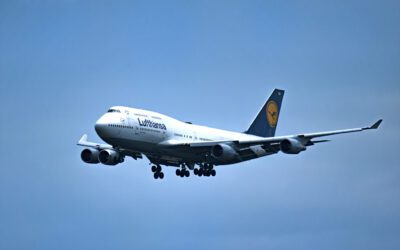Last year, US airlines collected more than $3.5 billion in luggage fees, according to the Bureau of Transportation Statistics. During that time, US airlines carried about 580 million passengers, and mishandled (damaged, lost, delayed, pilfered bag and/or contents) approximately 2.1 million passengers’ checked bags.
In 2012, mishandled luggage was reduced compared to any year since 1990, but in 2014, the rate of mishandled luggage per 1,000 passengers increased by about 12 percent, and it’s up again in 2015, through June. While the vast majority of air traveler bags arrive on time, and undamaged, it pays to take common sense steps to prevent their potential loss or delay.
There are many reasons why bags are sometimes lost or delayed, including:
• Tight connections
• Late check-ins
• Full flights
• Missing, incorrect or misread tags
• Accidental retrieval or purposeful theft of bags at baggage claim carousels
Here are my top dozen tips to prevent checked luggage from being lost, missing or delayed:
• Travel only with carry-on luggage — I know it’s obvious, but if you can, pack light and take everything in your carry-ons.
• Ship your luggage ahead — While it’s generally more expensive than flying with your bag, shipping it ahead to your destination can prevent your bag from being lost or stolen. This method isn’t foolproof, but mainline shippers lose few packages and bags.
• Avoid connecting flights — Sometimes it’s impossible to avoid connecting flights, but if you can, it reduces the number of times your bag is handled, and eliminates the problem of baggage handlers not having enough time to transfer bags between flights.
• Put your contact information inside and outside every bag — Sometimes ID luggage tags can be knocked off your bags. It’s happened to me as tags have been caught in machinery during baggage handling and torn off. I put two ID luggage tags each, on the top and side handles of my bags. I also put a couple of ID tags inside my bags, one hidden inside the liner.
Extra Tip: If you have a cellphone with you while you travel, use its phone number on your ID luggage tags, instead of your home number, so if your missing bag is located, you can be promptly notified by phone at your destination.
• Place a copy of your itinerary inside your bag — It can be very helpful in recovering a missing or delayed bag while still traveling, even if you’re traveling with your cellphone. For example, your cellphone might not have service when you’re contacted about your luggage. If your itinerary is in your bag, a call could be placed to your hotel or cruise ship, for example.
• Remove all stickers from prior flights before your next flight — Old tags, even those small rectangular ones from the airline on the side of the bag, can confuse baggage handlers who may then mishandle your bags.
• Customize the look of your bag — Differentiate your luggage from everyone else’s so you can identify it quickly at the baggage claim carousel, even from a distance, and so others will not try to retrieve it as theirs. I use a colorful strap on my bags, interesting luggage tags, and a ribbon on my handles. In addition, my initials are embossed into the bag.
• Get to the airport early — Call me old fashioned, but I always arrive at the airport at least 1½ hours before my flight to ensure my bag will have enough time to be loaded on my flight.
• Check the airline luggage tag’s accuracy before it’s taken away — Before my bag is sent to the baggage handlers, I check that the flight number and destination airport on the airline luggage tag is correct. I’ve caught mistakes several times which could have sent my bag to an airport thousands of miles from my destination.
• Get to your flight’s gate on time — Some people hate to stand in line to board their flights. I understand that, but the later you board your flight the more likely you’ll be required to gate check your carry-on because the overhead bins are full.
• Get to the baggage claim carousel as quickly as possible after deplaning — If at all possible, you want to arrive at baggage claim prior to your checked bag to try to ensure no one walks away with your bag. Despite everything I’ve done to differentiate my bag on a recent flight home, another passenger took it off the carousel. I immediately saw it and explaining he had taken my bag, retrieved it from him. I don’t know if it was an honest mistake or theft, but by being at the baggage carousel early, I prevented my bag from being taken by someone else.
• Safely keep your luggage claim stub until you’ve safely retrieved your checked and gate checked luggage and examined their contents — Your claim stub is your only proof you checked a bag with the airline, and your only identification of the bag in their baggage system. If your bag is missing, you need the stub to facilitate the return of your luggage or process a claim for it.
After many years working in corporate America as a chemical engineer, executive and eventually CFO of a multinational manufacturer, Ned founded a tech consulting company and later restarted NSL Photography, his photography business. Before entering the corporate world, Ned worked as a Public Health Engineer for the Philadelphia Department of Public Health. As a well known corporate, travel and wildlife photographer, Ned travels the world writing about travel and photography, as well as running photography workshops, seminars and photowalks. Visit Ned’s Photography Blog and Galleries.



